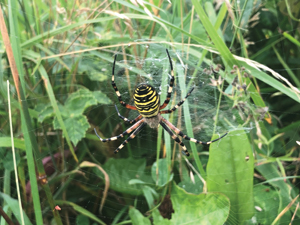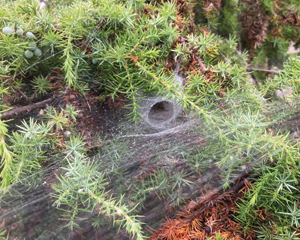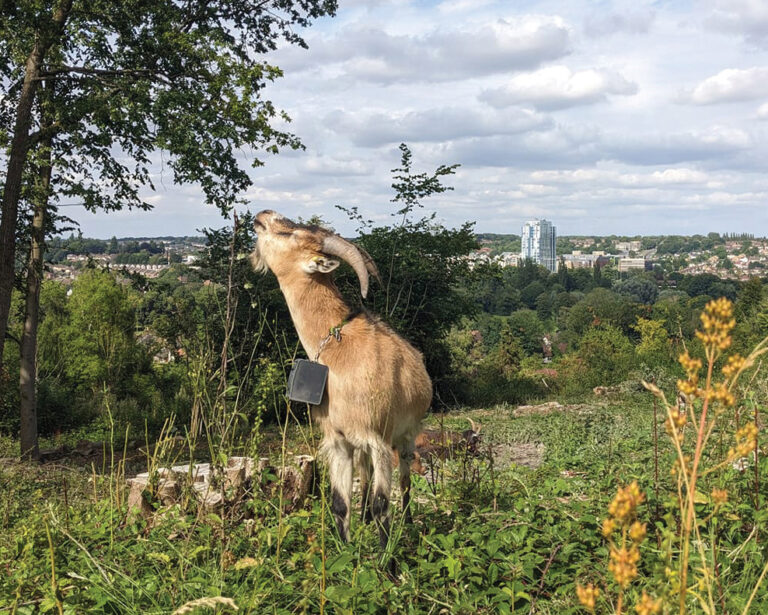Goats (and other livestock)
Our herd of Old English Goats have had a change of scenery recently. After having had a stint on Bovingdon Reach, they have been moved onto Lower Roughdown to do some intense conservation grazing.
To keep up to date with the grazing locations of all our livestock (including the goats), please visit the stock map on our website. We would like to remind dog walkers to keep their dogs on a lead when near ANY livestock, or to avoid these areas if possible.
Amazing Arachnids
Here are a couple of interesting little critters that you might encounter on Trust land up until around October. Both these species have been photographed on the estate this summer. The good news is that they are both harmless to humans!

Wasp Spider (Argiope bruennichi): The well-named wasp spider is a great mimic – striped in yellow, black and white like a common wasp to confuse its predators. Both the body and legs of the female of the species are stripy, whereas the male is smaller and pale brown. It is a relatively recent arrival from the continent that has slowly spread across the south of England. Look out for this large and colourful spider in the meadows of Westbrook Hay.
The wasp spider builds large orb webs in grassland and heathland and attaches its silk egg-sacs to the grasses. Mating is a risky business for males; and they often get eaten by the female once mating has taken place!

Labyrinth Spider (Agelena Labyrinthica): Woe betide any hapless grasshopper or cricket who hops onto this web in the long grass!! The labyrinth spider will rush out and drag its prey down into the funnel shaped tube to feed on them. Further down the funnel is a labyrinth of smaller tunnels, hence the name. Hidden right in the centre of this labyrinth is an egg sac containing the developing young. This impressive construction was spotted by our Ranger, Jane, during a conservation task to remove scrub from around the junipers on Lower Roughdown.
Not to be confused with the funnel web spider native to Australasia (although they are sometimes known as funnel webs here too), labyrinth spiders are up to 18mm long. The abdomen features a central pale brown stripe with a darker, more greyish band on either side. The darker bands have tiny white dashes or chevron markings running through them. Fun fact: the females will stay in the web until the young are ready to leave – sometimes she will die before they go, in which case they will eat her!
Donating made easy
As a charitable Trust, we are most grateful to our supporters and beneficiaries who kindly make financial donations towards our work. If you would like to donate then please use the button below. Thanks to everyone who has generously donated so far.
www.boxmoortrust.org.uk
01442 253300



